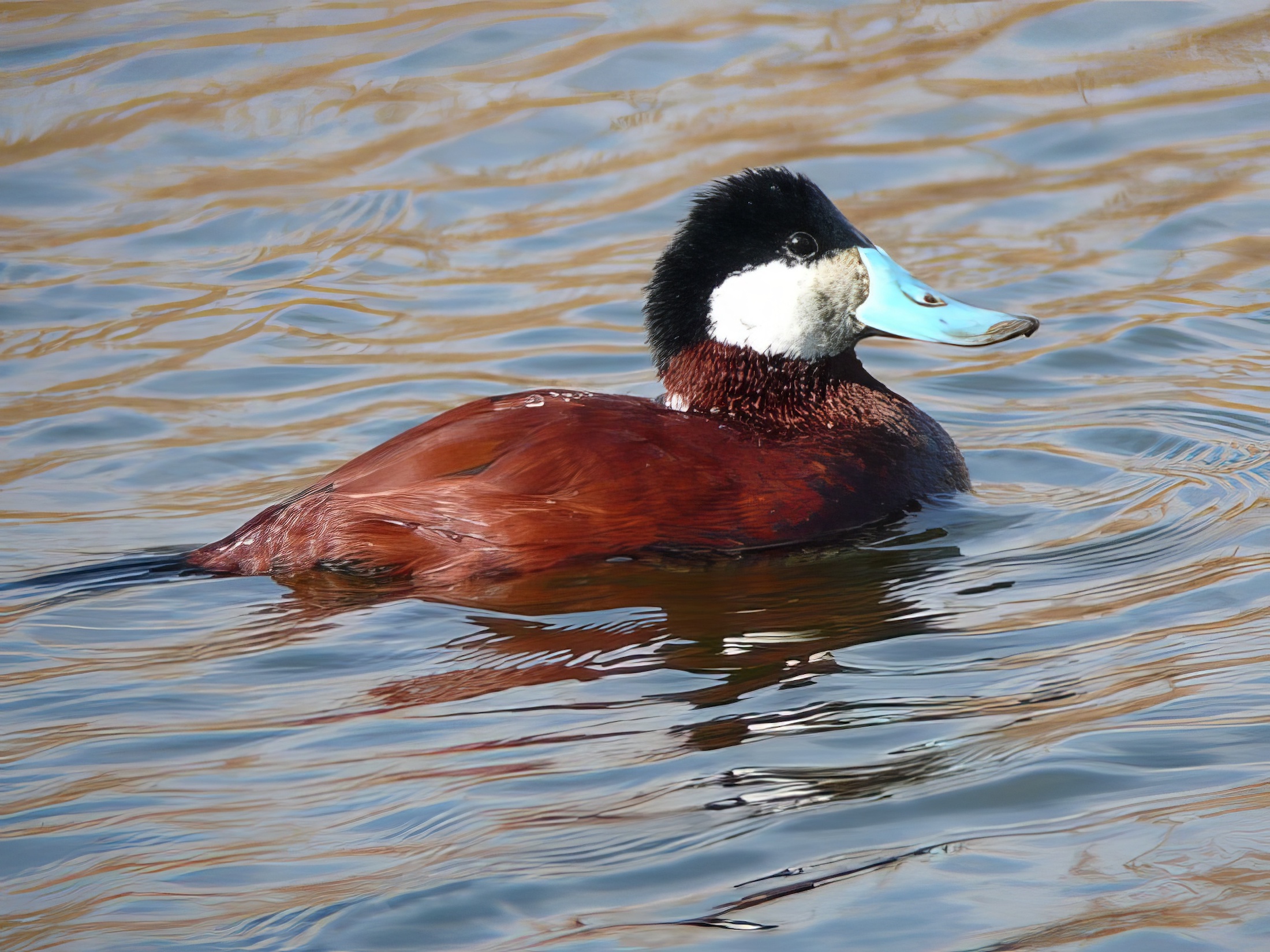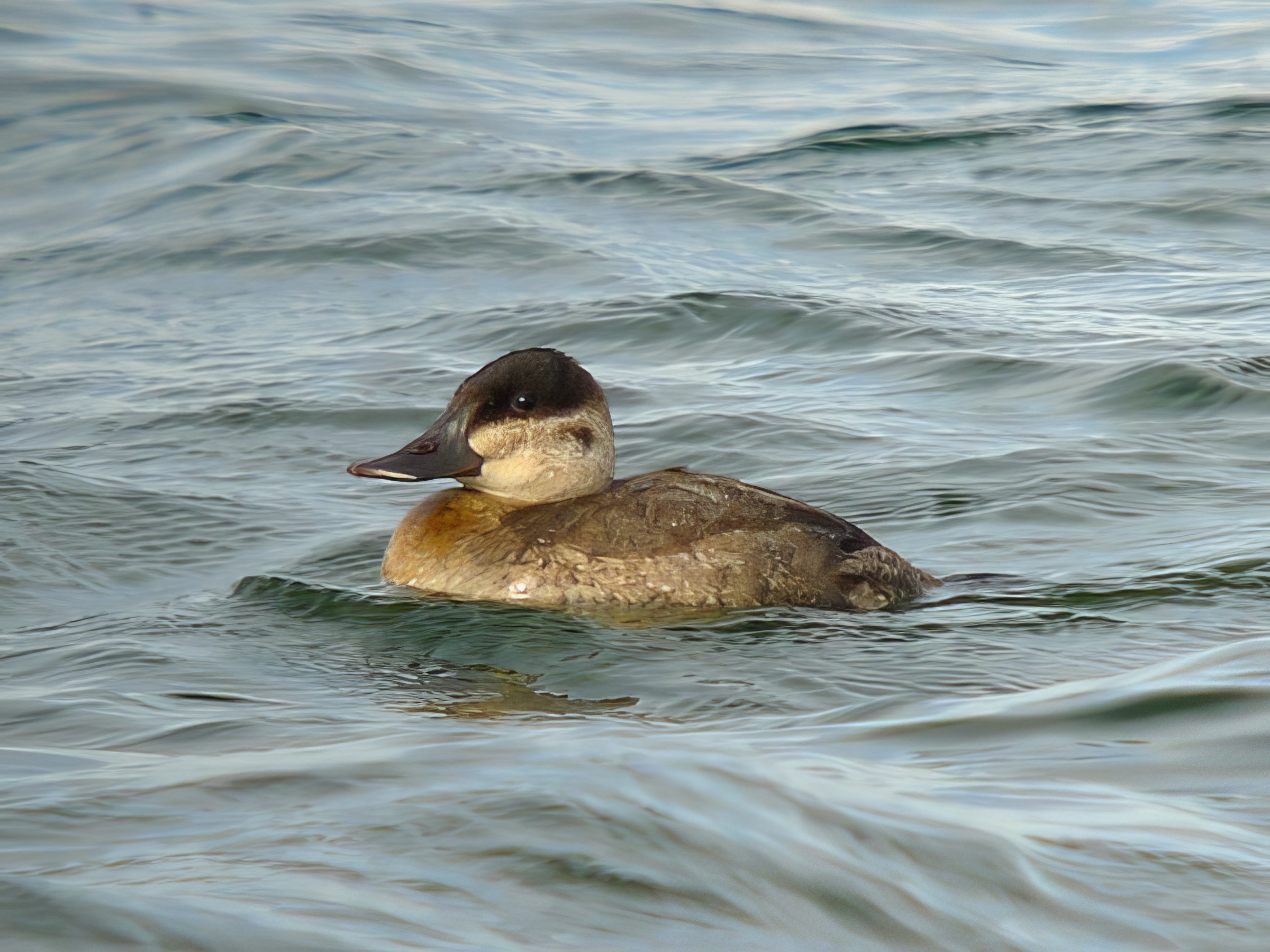Ruddy Duck Oxyura jamaicensis
Former scarce feral breeder and winter visitor, now very rare or possibly extinct.


The Wildfowl Trust imported three pairs in 1948, and they began breeding at Slimbridge the following year. Not all of the resulting youngsters could be pinioned though, and it was estimated that during 1956-1963 about 70 juveniles had escaped from Slimbridge. The first Ruddy Ducks reported in the wild in Britain were in 1954 when drakes were seen at Hingham, Norfolk in April and Carsebreck, Perthshire, in June and the first record of feral breeding is believed to have come from Chew Valley Lake, Somerset when a brood of ducklings was seen there in May, 1960 (Hudson 1976). From there the British feral population spread and by January 2000, the UK population was estimated at c. 6,000 birds (Henderson 2009). It was one of five introduced species (three waterfowl and two pheasants) that were admitted to the British and Irish list in 1971, Category C, when it was accepted that they had succeeded in establishing a self-maintaining feral population.
The first county record was at Burton Pits on October 25th,1964, and later a small breeding population became established in the Humber Clay pits from 1984. By 1989 there were 12 pairs across the county which had grown to 30 breeding pairs and 66 wintering birds by 1999. In 1983, the first feral Ruddy Duck was recorded in Spain, raising concerns about the risk of hybridisation with the White-headed Duck Oxyura leucocephala. Ruddy Ducks have been recorded annually in Spain since 1991, and the first Ruddy Duck x White-headed Duck hybrids were observed in the same year. Spanish conservationists successful argued for a European Union wide cull. By 2007 the Lincolnshire wintering population had grown to 284 but then extirpation began. By 2010 when the last breeding was recorded “in the north of the county” the population had fallen to 49. The last reported record was a single on Holywell Lake on September 14th, 2014. Probably the first species to be directly extirpated from Lincolnshire by shooting since Red Kite around 1870.
References
Henderson, I. (2009). Progress of the UK Ruddy Duck eradication programme. British Birds 102 (12): 680-690.
Hudson, R. (1976). Ruddy Ducks in Britain. British Birds 69 (4): 132-143.
(Account as per new Birds of Lincolnshire (2021), included September 2022)

